The 1920s was a decade of change, and men’s suits reflected that shift. Stiff, heavy Victorian tailoring gave way to sleeker silhouettes, lighter fabrics, and bold styles that matched the energy of the Jazz Age. Fashion became less about strict rules and more about showing personality while still looking sharp.
Suits weren’t just clothing; they were symbols of status and personality. Wool, tweed, cotton, and linen all played roles in shaping how men dressed for work, leisure, and celebration.
Imagine wide-legged trousers, slim jackets, and pinstripes paired with polished shoes and a crisp vest. These details made 1920s suits both practical and stylish, creating looks that remain influential today. Dressing this way wasn’t only about fashion—it was about confidence, identity, and embracing a modern lifestyle.
In this guide, you’ll see what suits were made of, how they evolved across the decade, and how you can bring 1920s flair into your wardrobe today.
Here’s What You’ll Learn:
- The Fabrics of the 1920s
You’ll learn which materials—like wool, tweed, flannel, cotton, and linen—were the backbone of men’s suits during this era. Each fabric had a role depending on the season, balancing warmth, breathability, and style. - How Suit Styles Changed Through the Decade
Discover how men’s suits shifted from slim, high-buttoned cuts in the early 1920s to looser, wide-legged styles by the late decade. These changes reflected both practicality and the bold spirit of the Jazz Age. - The Role of Waistcoats and Vests
See why waistcoats were an essential part of early 1920s three-piece suits and how they gradually became optional as men embraced simpler two-piece suits. The vest’s evolving cut mirrored the move toward modern tailoring. - Daywear vs. Evening Suits
Understand the difference between everyday suits and formal evening wear like tuxedos, white dinner jackets, and tailcoats. Each had its own rules, showing how men balanced practicality with elegance. - Conservative vs. Fashion-Forward Looks
Learn how traditional American business suits coexisted with bolder, trend-driven styles. While one projected professionalism, the other captured the flair of the Jazz Age, letting men express both reliability and personality. - How to Capture the 1920s Look Today
Get tips on fabrics, cuts, and accessories to recreate authentic 1920s-inspired outfits. From suspenders and pocket watches to wide trousers and pinstripes, you’ll see how to bring vintage charm into modern fashion.
What is a Suit
A suit is a coordinated outfit made from the same fabric, usually consisting of a jacket and trousers, with the option of adding a vest. It is designed to be worn as a complete set, giving a polished and professional look. Suits are worn for many occasions, including business, weddings, formal events, and even casual gatherings when styled with lighter fabrics and relaxed cuts. They come in different fits, fabrics, and colors, allowing men to adapt their style to both the setting and their personal taste.
Types of 1920s Suits
Business Suits
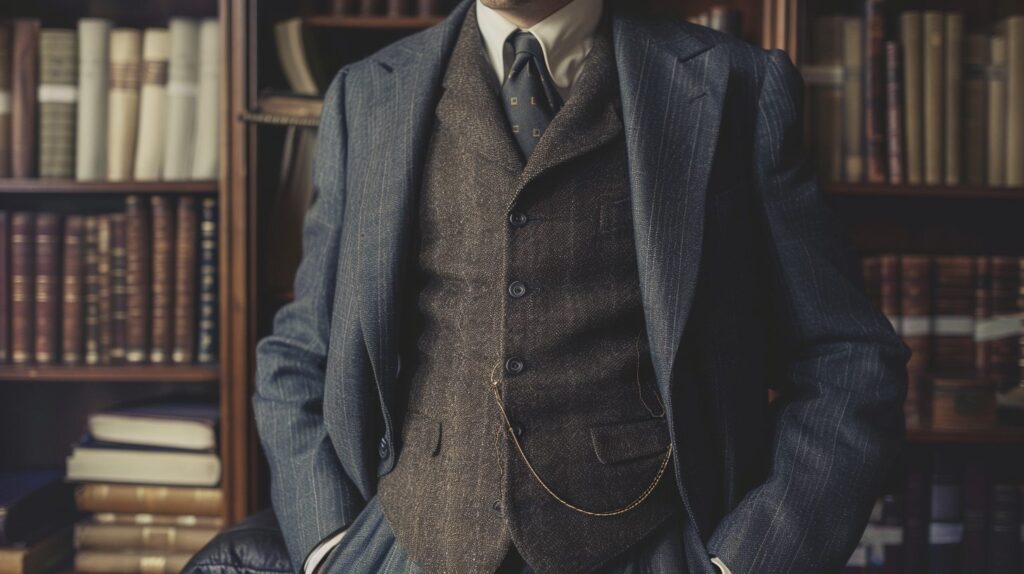
Business suits in the 1920s were mostly dark wool in navy, brown, or charcoal. Early in the decade, jackets were slim with high buttons and narrow trousers, while by the late 1920s, the cuts relaxed with broader shoulders and slightly wider pants. These suits were considered practical, formal, and essential for working men.
Formal Suits

Formalwear included tuxedos and dinner jackets, often in black or deep blue. Paired with stiff-collared white shirts, bow ties, and patent leather shoes, these suits were worn at evening parties, theater outings, and formal dances. Some men also wore tailcoats to high-society events.
Casual Suits
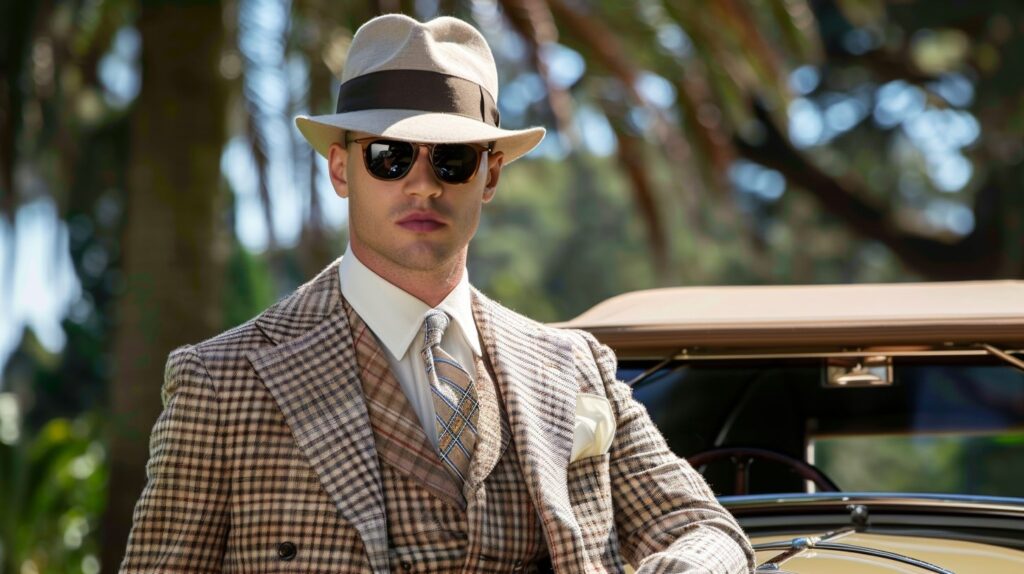
Casual suits offered lighter fabrics like linen or tweed, especially for summer or outdoor wear. Stripes, checks, and lighter tones became popular, allowing men to look sharp without the stiffness of business attire. These suits were common at garden parties, country outings, and casual gatherings.
Fashion-Forward Suits
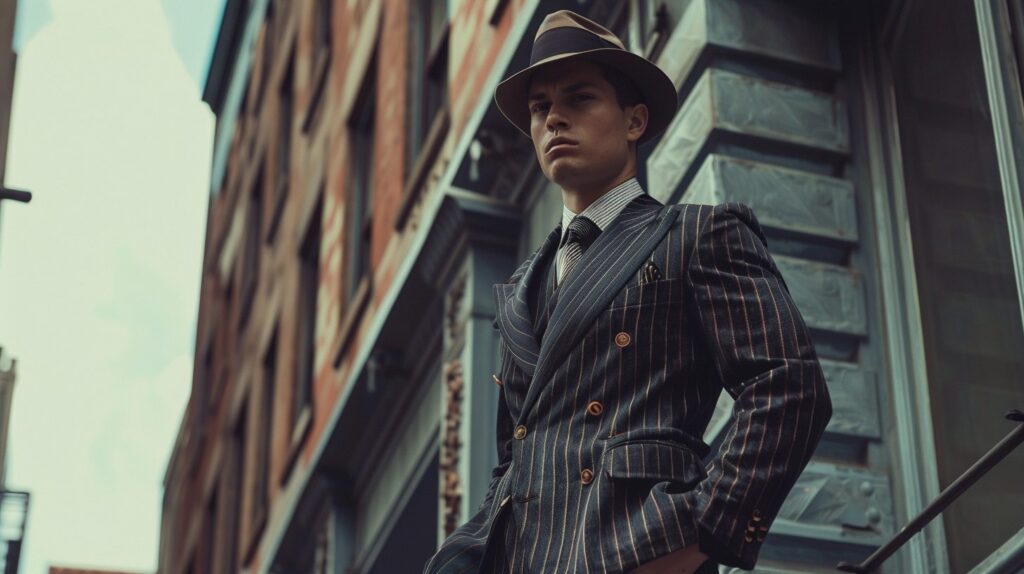
By the mid-1920s, style took a daring turn. Double-breasted jackets, wider trousers (Oxford bags), and bold fabrics like pinstripes or plaids became trendy. This style reflected the Jazz Age’s energy and was especially popular with young men and entertainers.
Sports and Leisure Suits

Sports jackets and knickerbocker suits (with trousers ending at the knee) were fashionable for golf, tennis, and leisure activities. They were often paired with patterned socks, flat caps, or newsboy hats, creating a stylish yet relaxed look for weekends.
Evening Suits (White Dinner Jackets)
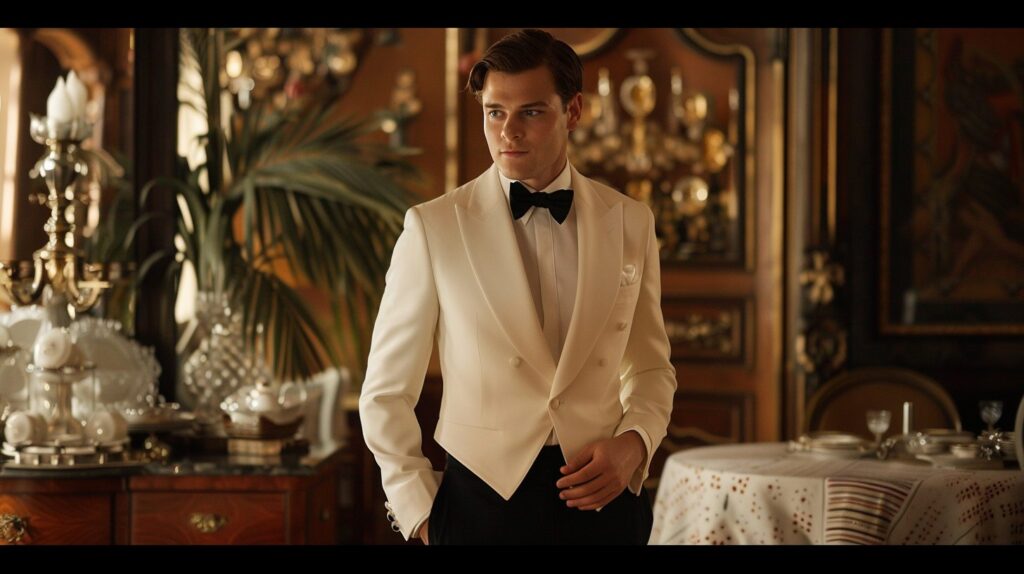
Toward the end of the decade, white or cream dinner jackets appeared in warmer climates or for summer evening events. Worn with black trousers and bow ties, these suits signaled sophistication and a touch of Hollywood glamour.
1920s Waistcoats and Vests: Now Optional, with a New Cut
In the 1920s, waistcoats and vests were an essential part of men’s suits, completing the classic three-piece look. They were cut high with multiple buttons, often featuring watch pockets, and worn snug to keep the outfit neat. By the late 1920s, however, they became less mandatory as men embraced a more relaxed style, sometimes skipping the vest altogether for a two-piece suit. The cut also began to change, with lower button stances and slimmer fits, reflecting a shift toward modern tailoring. Today, waistcoats are optional rather than standard, but when worn, they still add a refined, vintage touch to any suit.
1920s Men’s Suits History
Men’s suits in the 1920s reflected a big shift in style, moving away from stiff Victorian formality toward a more modern and relaxed look. Early in the decade, suits featured slim fits, high-waisted trousers, and shorter jackets, giving men a tall and lean appearance. By the mid-to-late 1920s, the “jazz age” influence brought looser cuts, wider trousers, and padded shoulders for a stronger silhouette. Double-breasted jackets and pinstripes grew popular, while lighter fabrics and colors made suits more versatile for both day and evening wear. The three-piece suit, with a vest, was still common, but men increasingly embraced the two-piece suit as fashion shifted toward comfort and practicality. This balance of elegance and ease set the stage for the modern suit styles we know today.
👔 1920s Men’s Suit Styles
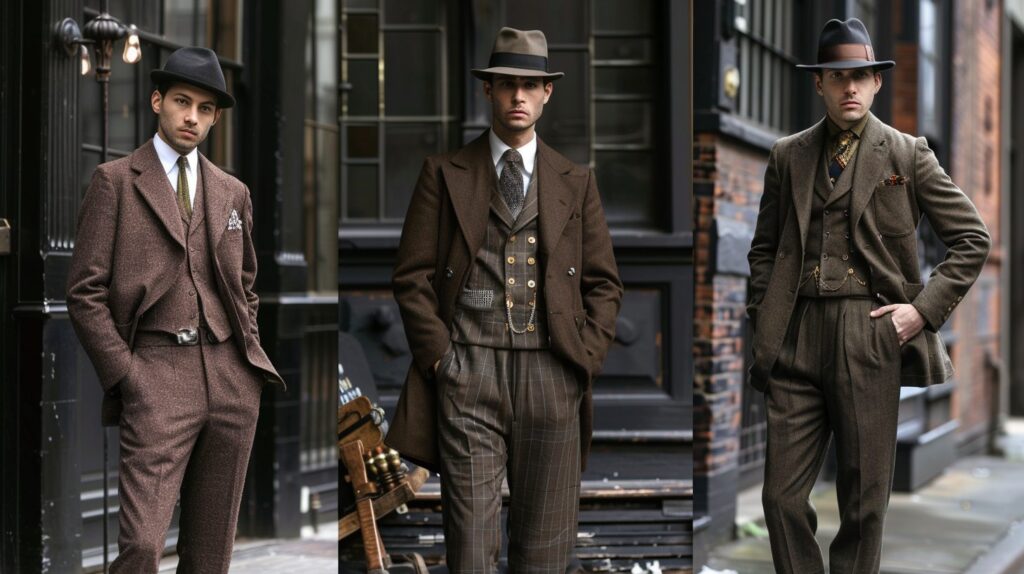
Men’s fashion in the 1920s evolved quickly, moving from simple, work-focused suits to bolder, stylish looks that reflected the jazz age. Here’s how suits changed through the decade:
📌 Early 1920s
Suits were slim and practical. Jackets had high buttons and a closer fit, paired with narrow trousers. Dark wool was the standard for business and everyday wear, keeping the style formal and reserved.
📌 Mid-1920s
Fashion loosened up with wider trousers called Oxford bags, which became a trend among younger men. Double-breasted jackets started gaining popularity, while pinstripes and patterned fabrics added flair and personality.
📌 Late 1920s
By the end of the decade, styles looked more relaxed. Jackets had natural shoulder lines, vests became optional, and men experimented with different fabrics and cuts. This marked the move toward the smoother, more modern suits of the 1930s.
🌙 1920s Men’s Evening Suits
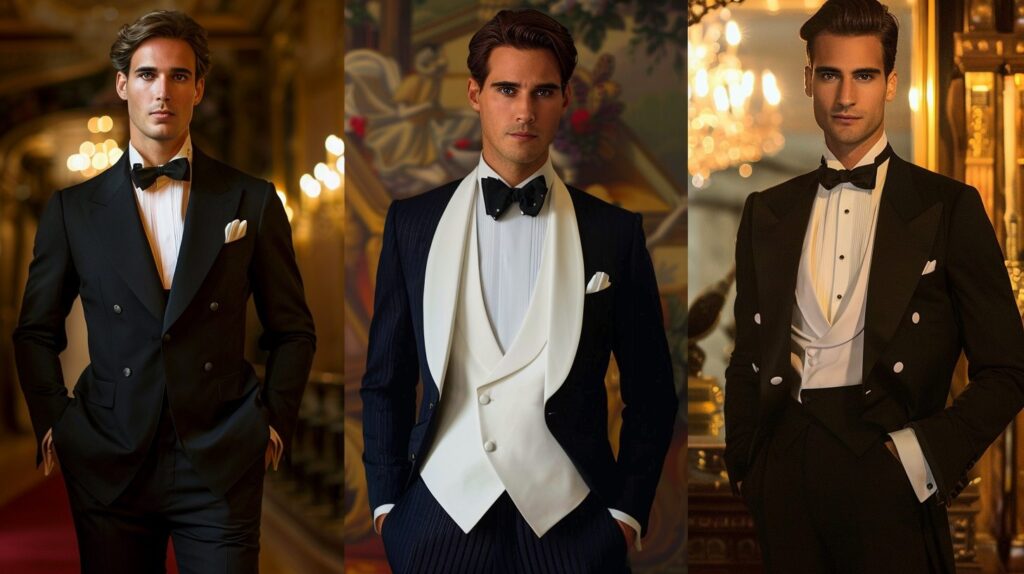
Evening wear in the 1920s carried a higher level of formality compared to day suits. Men dressed with elegance and precision, often following strict dress codes.
🎩 Tuxedos
The tuxedo was the classic choice, usually in black or midnight blue with satin lapels. It offered a sharp, polished look suitable for dinners, theaters, and evening parties.
🤵 White Dinner Jackets
In summer or warmer climates, men wore white dinner jackets paired with dark trousers. This created a lighter, refined look while still staying formal.
🕴️ Tailcoats
For the most formal occasions—like grand balls or high-society events—tailcoats were still worn. They reflected tradition and marked the height of formality.
👔 Choosing a 1920s Suit for You
If you want to capture the charm of the 1920s today, pay attention to the fabrics, cuts, and details that defined the era.
🧵 Fabrics
Go for classic materials like wool, tweed, linen, or flannel. These were the staples of the decade and give your outfit an authentic vintage touch.
✂️ Cut
Look for high-waisted trousers with wide legs and pair them with a fitted jacket. This combination reflects the sharp and confident silhouette of 1920s men.
🎨 Colors
Stick to timeless shades such as navy, brown, grey, or pinstripes. These tones were popular in the Jazz Age and still look stylish today.
🎩 Accessories
Finish your look with suspenders, ties, hats, and pocket watches. These small touches bring your outfit together and make the 1920s style truly come alive.
Conservative American Suits
Conservative American suits are known for their practicality and classic appeal. They became popular in the early 20th century as everyday business wear and remain a staple in offices and formal settings today. The style is built on function, comfort, and a professional appearance rather than bold fashion statements.
✂️ The Cut
The American suit is often a single-breasted, two- or three-button jacket with a looser, boxy fit. It has natural shoulders and little padding, giving it a more relaxed shape compared to European suits.
🎨 Fabrics and Colors
Conservative suits are usually made from wool or wool blends, designed for durability. Colors are safe and traditional: navy, charcoal, grey, and black dominate, while pinstripes or subtle checks are sometimes seen.
🧥 Function Over Flash
Unlike Italian or British suits, the conservative American suit avoids flashy details. Jackets often come with a single vent in the back and standard flap pockets, making them simple and versatile.
👔 When to Wear
These suits are ideal for business settings, interviews, and formal occasions where professionalism is key. They are less about standing out and more about projecting reliability and seriousness.
1920s Vintage Menswear FAQs
What were suits made of in the 1920s?
Mostly wool, tweed, flannel, cotton, and linen depending on the season.
Why did everyone wear suits in the 1920s?
Suits were a symbol of respect and maturity. They were expected to wear daily attire.
Did everyone wear suits in the 1920s?
Yes, most men did. Rich or poor, suits were standard. The quality of the fabric showed class difference.
What was men’s fashion like in the 1920s?
It was stylish, bold, and modern. Wide trousers, short jackets, and patterned fabrics were common.
Where can I buy 1920s suits today?
- Online vintage shops.
- Costume and reproduction stores.
- Suit makers that offer vintage-inspired cuts.
Which men’s suits are the best for a 1920s look?
Three-piece wool or tweed suits with wide trousers capture the style best.
Final Thoughts
The 1920s was a time when men’s fashion took bold steps. Suits were made from wool, tweed, flannel, cotton, and linen. Styles moved from slim to wide, conservative to flashy. Whether in evening wear or day suits, men in the 1920s always dressed sharp. If you want to relive that era, explore 1920s suits for men—they remain one of the most iconic styles in history.

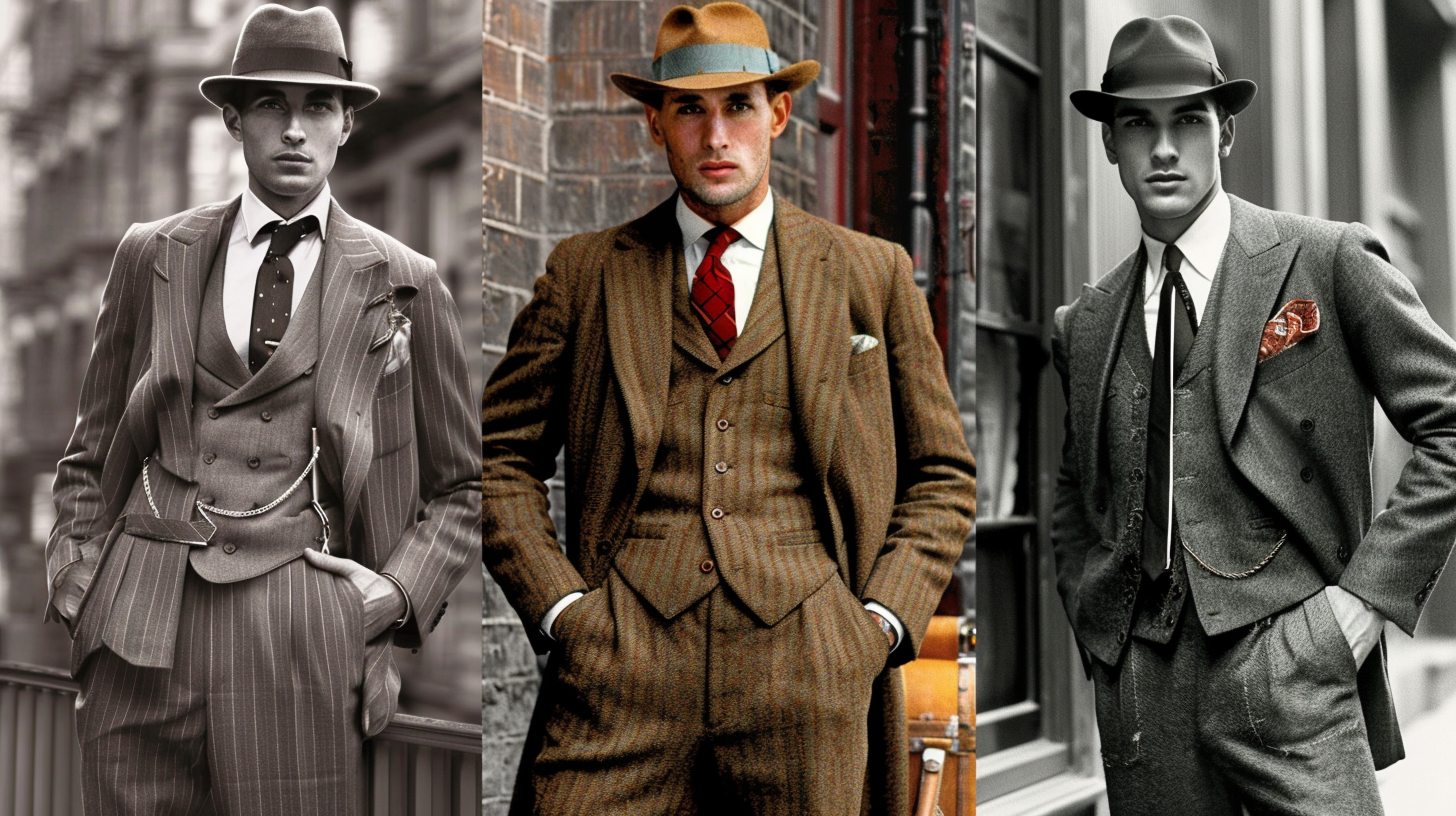










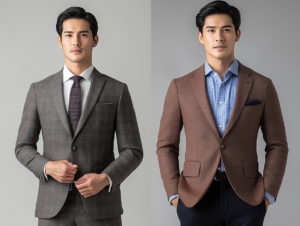
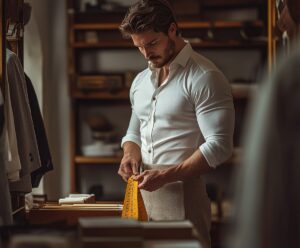
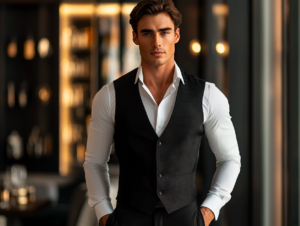
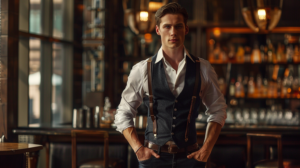

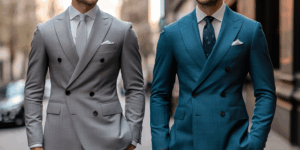
What do you think?
It is nice to know your opinion. Leave a comment.